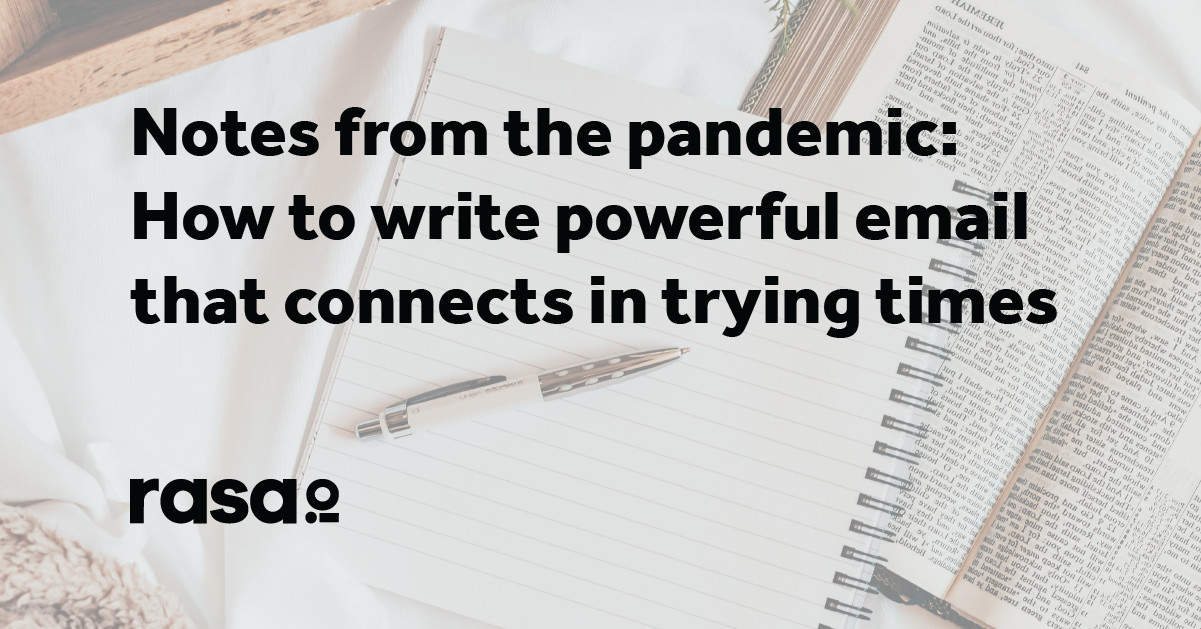Dan Oshinky’s instinct was to use humor to talk to his email audience about the novel coronavirus that was sickening thousands and starting to shut down U.S. sports leagues, businesses and schools in March 2020. He knew it was the wrong direction as soon as he started putting words to the page.
The subject line for Oshinky’s email newsletter, called Not Another Newsletter, follows a similar format each month: “The [Month of Publication] Edition of Not Another Newsletter Is Here.”
“Initially what I wrote down was ‘The World Is Ending Edition of Not Another Newsletter Is Here,’” Oshinsky said. “I chuckled for a second and then thought, ‘Oh no, that’s not right at all.’ That’s not what people want to hear from me right now.
That gut-check moment is crucial when writing email. Oshinsky, who has led newsletter strategies for BuzzFeed and The New Yorker, encourages email writers to focus on one question in tough times: How can I be empathetic?
The bottom line? Tone matters. Pay close attention to how you’re communicating with customers, not just what you’re communicating.
Oshinsky shared additional insight on email and tone during a recent episode of the Pushing Send podcast. Here’s what he had to say.
Assess the situation
Oshinsky was flying when he wrote his April 2020 newsletter in mid-March. During the flight, President Donald Trump announced the United States would shut down flights from Europe, the National Basketball Association suspended games indefinitely and actor Tom Hanks announced he had tested positive for COVID-19.
Oshinky admitted his first instinct was to make light of the situation. He started typing. That’s when his offhand reference to the end of the world surfaced.
“There was a lot on my mind like a lot of folks around the world… I tried being funny at first. It just seemed off to try to be funny or make light of the situation,” Oshinky said.
Like many Americans, Oshinsky had little idea how COVID-19 would reshape so much of our lives back in March 2020. He also knew he wasn’t alone in grappling with the uncertainty and fear in the moment.
He leaned into that uncertainty, writing about his own fear and nervousness in the moment and how it felt odd to be writing an email. He asked after his readers and hoped they were safe.
“I talked a little about how I was feeling. I tried to take an empathetic tone… to try to tell people I’m scared, I’m nervous and I hope you’re well,” Oshinky said.
Write what you feel
This old bit of writerly wisdom holds up in crisis email. Not sure what to write about? Think about how you might talk with your neighbor in the moment.
Oshinsky noted his post-COVID tone was honest and open. He wrote about how it was weird to be writing an email newsletter right now. He talked about his desire to help his readers in whatever way he could.
“Be personal, be human and write as though a person reading this is your nextdoor neighbor and somebody who you care about,” Oshinsky said.
Make a personal connection
It’s OK to talk about what you’re feeling in the moment—if you’re not sure what to write, admit that, then press forward and write what you know.
The best email newsletters identify a shared experience and relate thoughts and emotions that the readers are feeling themselves, Oshinsky said.
Strive to build a personal connection. Oshinsky told his readers that he wanted to hear from them and gave them a way to reach out directly.
“I got a lot of nice notes back from readers, which was really encouraging,” he said.
Writing email people want to read is tough in general. It can seem especially trivial in times of crisis. Look at tough times as a chance to set aside sales and marketing, and connect with your network on a personal level.












